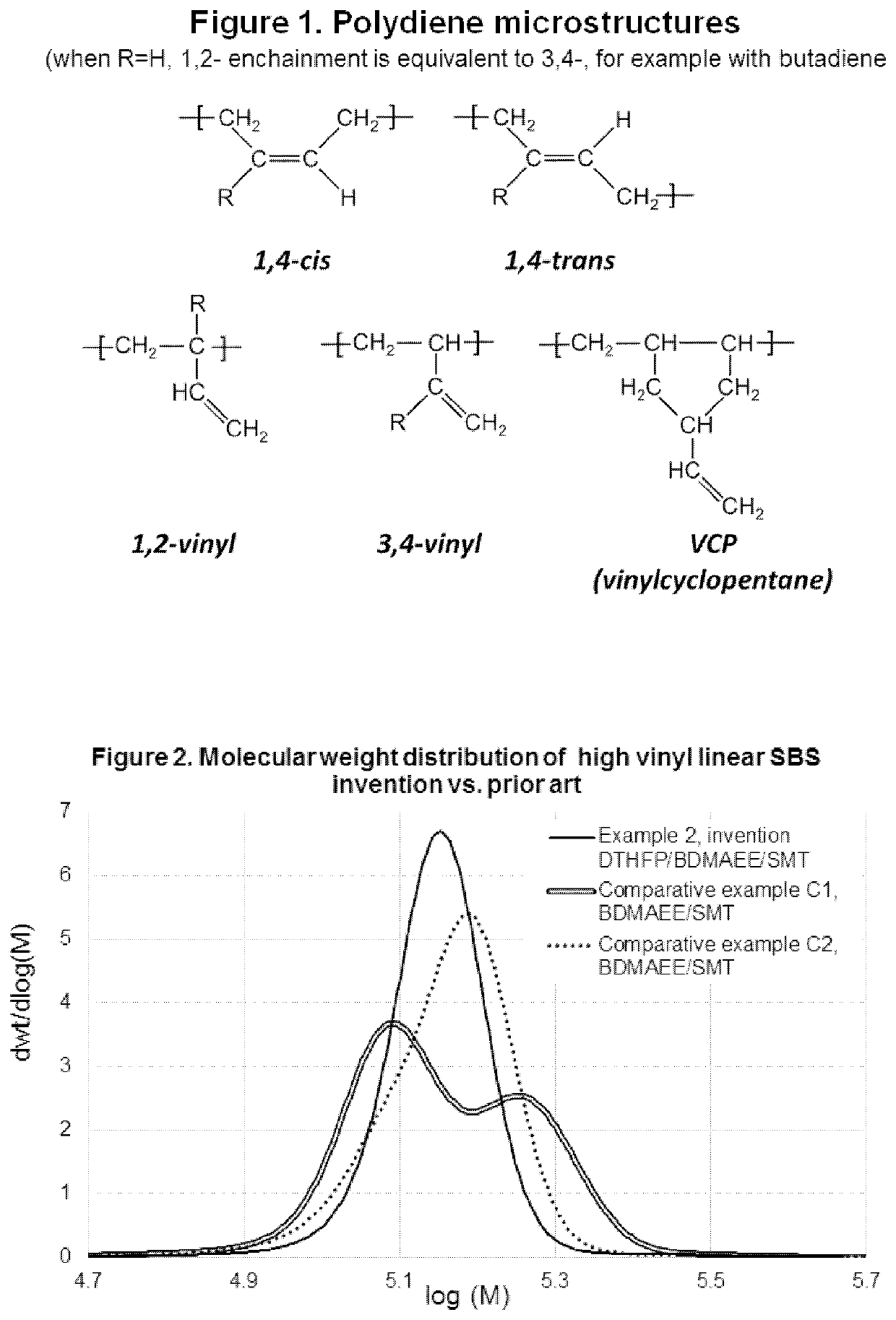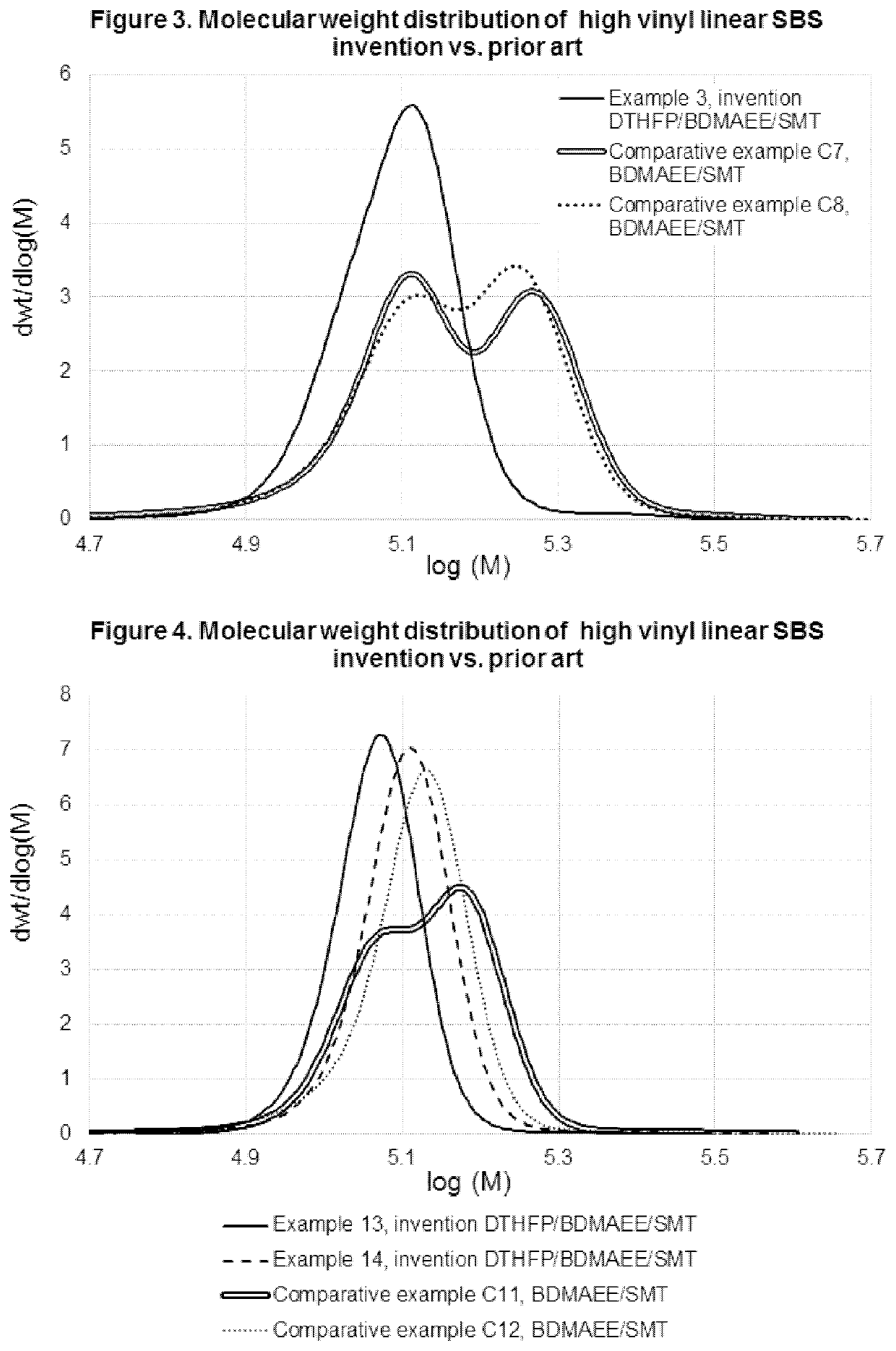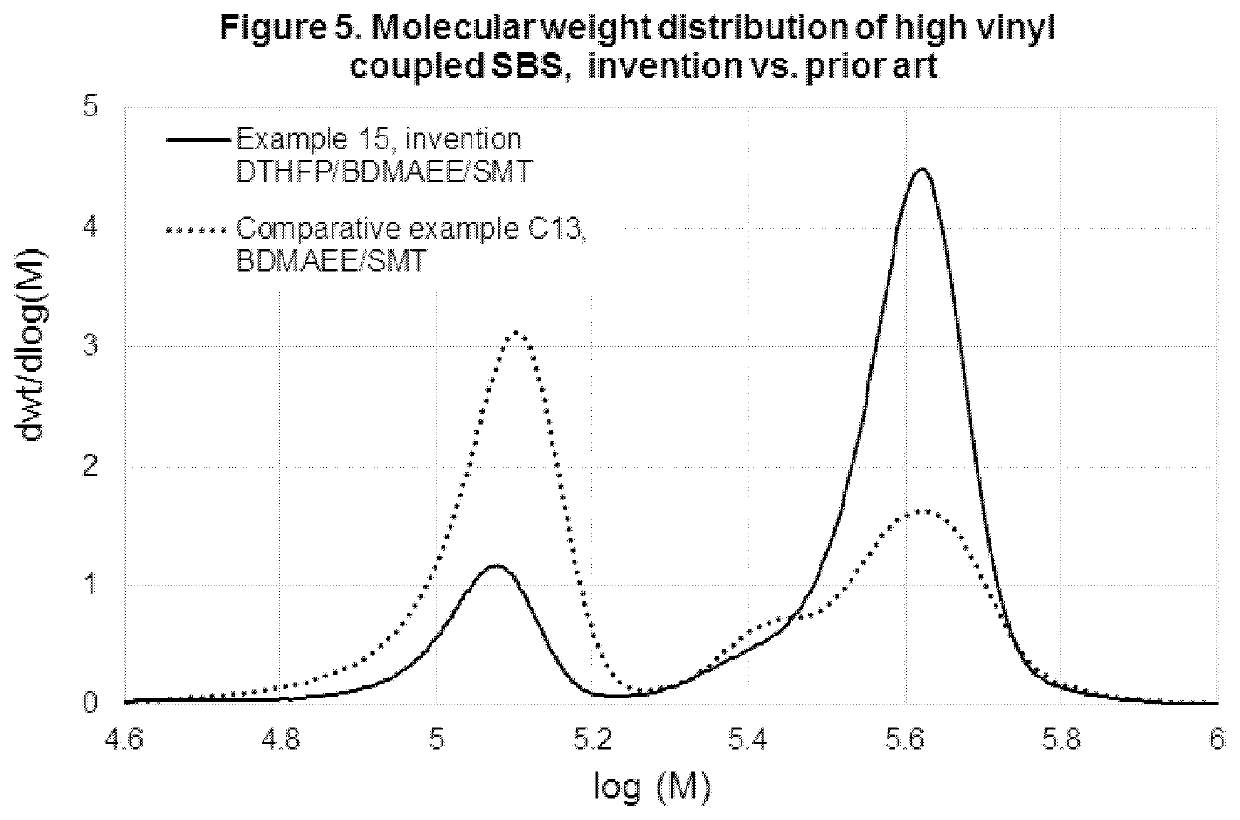Polar modifier systems for high vinyl block copolymerization
a technology of polar modifiers and vinyl aromatic monomers, applied in the field of polar modifiers, can solve the problems of not being able to produce block copolymers of vinyl aromatic monomers and conjugated diene monomers that fulfill, the polymerization rate becomes rather slow, and the incorporation of block copolymers with rather high levels of randomized comonomers, so as to achieve low level of vinylcyclopentane content and low level of randomized repeat unit incorporation
- Summary
- Abstract
- Description
- Claims
- Application Information
AI Technical Summary
Benefits of technology
Problems solved by technology
Method used
Image
Examples
example 1
[0059]Uncoupled SBS block copolymer using preferred polar modifier system of invention: High polar modifier system concentration, high molecular weight copolymer synthesis at low temperature range.
[0060]Cyclohexane (5383 g) was charged in to a 7.6-liter stainless steel reactor under inert nitrogen atmosphere. Solvent temperature was stabilized in the reactor at 18.1° C. (Tst1) by means of water circulation through reactor internal coil. Thereafter BDMAEE, DTHFP, n-butyllithium initiator (nBuLi) initiator and SMT were added in the listed order. DTHFP, BDMAEE and SMT molar ratios relative to active lithium content were 4.17, 0.52 and 0.10, respectively. Styrene (84.5 g) was feed to the reactor at a rate adequate to complete its charge in 0.5 minutes. Circulation of water at controlled temperature was continued along first styrene block polymerization. Reactor temperature reached a peak temperature of 19.7° C. in 3 minutes, and a wait time of 2 minutes was practiced, therefore first bl...
example 2
[0061]Uncoupled SBS block copolymerization using preferred polar modifier system of invention: Medium polar modifier concentration range, medium molecular weight copolymer synthesis at low temperature range.
[0062]The block copolymer was prepared in a 5.3-liter lab scale batch thru the following steps: (1) charge of cyclohexane solvent to a reactor; (2) stabilization of solvent to a temperature Ti; (3) charge of polar modifiers BDMAEE and DTHFP; (4) charge of n-butyllithium; (5) charge of SMT; (6) charge of styrene monomer; (7) immediate interruption of reactor temperature control to perform polymerization in absence of external cooling or external heating, apart from natural heat loss to the environment (8) homopolymerization of first styrene block for a period of time tSt1, where heat of polymerization gradually raised reactor temperature without detection of temperature drop that evidenced a peak temperature during such period; (9) registration of reactor temperature TiBd and imme...
examples 3 thru 8
[0077]Uncoupled SBS block copolymerization using preferred polar modifier system invention, at medium temperature range. An S-b-B-b-S type block copolymer was prepared in a lab scale batch reactor thru the following steps: (1) charge of cyclohexane solvent to a reactor; (2) stabilization of solvent to a temperature Ti; (3) charge of polar modifiers BDMAEE and DTHFP; (4) charge of n-butyllithium; (5) charge of SMT; (6) charge of styrene monomer; (7) immediate interruption of reactor temperature control to perform polymerization in absence of external cooling or heating, apart from natural heat loss to the surroundings (8) homopolymerization of first styrene block, where heat of polymerization gradually raised reactor temperature up to a peak temperature TpSt at a time tpSt elapsed from beginning of styrene charge and such peak temperature; (9) a wait time of 10 minutes past TpSt, where a slight temperature drop occurred; (10) registration of reactor temperature TiBd and immediate cha...
PUM
| Property | Measurement | Unit |
|---|---|---|
| mass ratio | aaaaa | aaaaa |
| molar ratio | aaaaa | aaaaa |
| molar ratio | aaaaa | aaaaa |
Abstract
Description
Claims
Application Information
 Login to View More
Login to View More - R&D
- Intellectual Property
- Life Sciences
- Materials
- Tech Scout
- Unparalleled Data Quality
- Higher Quality Content
- 60% Fewer Hallucinations
Browse by: Latest US Patents, China's latest patents, Technical Efficacy Thesaurus, Application Domain, Technology Topic, Popular Technical Reports.
© 2025 PatSnap. All rights reserved.Legal|Privacy policy|Modern Slavery Act Transparency Statement|Sitemap|About US| Contact US: help@patsnap.com



